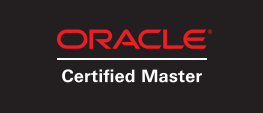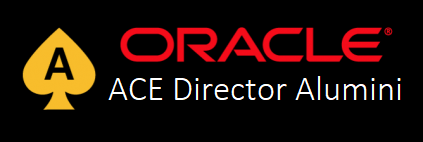As I said in previous sections, one course that I do recommended for this exam is the "Oracle Database 12c: OCM Exam Preparation Workshop".
So here I will list all Course Sections and Objectives retrieved from Oracle Website and that will probably help also to serve as a topics guide:
Workshop Objectives:
- Describe the multitenant architecture
- Establish connections to CDB / PDB
- Implement fine-grained auditing (FGA)
- Describe operations that can be parallelized
- Describe ways to move data
- Describe the architecture, uses, and advantages of partitioning
- Describe how to optimize a star query using star transformation
- Use the SQL Access Advisor
- Explain the goals, benefits, and architecture of the inmemory column store
- Explain the differences between physical and logical standby databases
- Use real-time query to access data on a physical standby database
- Create a snapshot standby database to meet the requirement for a temporary, updatable snapshot of a physical standby database
- Explain the principles and purposes of clusters
- Explain and apply Automatic Storage Management (ASM) initialization parameters
- Describe the benefits of Oracle RAC
- Modify initialization parameters in a RAC environment
Workshop Topics:
- Basics of Multitenant Container Database and Pluggable Databases
New Multitenant Architecture: Benefits
Multitenant Container Database
Separating SYSTEM and User Data
Provisioning a Pluggable Database
Interacting Within Multitenant Container Database
Multitenant Container Database Architecture
Common and Local Users
Common and Local Privileges and Roles
- Managing Tablespaces and Users in CDB and PDBs
Tablespaces in PDBs
Creating Permanent Tablespaces in a CDB
Creating Local Temporary Tablespaces
Tablespace Encryption: Advantages
Creating an Encrypted Tablespace
Common and Local Schemas/Users
Granting and Revoking Privileges
Granting Common or Local Privileges/Roles to Roles
- Basics of Parallel Execution
Parallelizable Operations
Previewing Execution Plans
Understanding Parallel Execution: Query Coordinator (QC) and Parallel (PX) Servers
Parallel Execution Plans: Identifying the Producers and Consumers
Parallel Execution Plans: Understanding Granules
Example PX Parameters
PX Parameters for Auto DOP
Parameters for PX Messaging: Shared and Large Pools
- In-Memory Parallel Execution & Multi-Threaded architecture
Direct Reads Versus Buffer Cache Reads
Parallel Execution and the Buffer Cache
In-Memory Parallel Execution
When In-Memory Parallel Execution Works
Controlling In-Memory Parallel Execution
Enhance In-Memory PX Using Server Pools
Enhance In-Memory PX: Automatic Big Table Caching
Using PARALLEL_FORCE_LOCAL Parameter
- Moving Data
Oracle Data Pump: Overview
Directory Objects for Data Pump
Data Pump Export and Import Clients: Overview
External Tables
Data Pump Import: Transformations
SQL*Loader: Overview
Loading Methods
Transportable Tablespaces
- Working with Indexes
Normal B*-tree Indexes
Index Scans
Index Range Scan
Index Range Scan: Function-Based
Index Fast Full Scan
B*-tree Indexes and Nulls
Index-Organized Tables
Bitmap Indexes
- Partitioning Concepts
Partitioned Tables and Indexes
Partitioning Strategies: Single-Level Partitioning
Oracle Partitioning History
Partition Key Extensions
Benefits of Partitioning: Table Availability
Manageability: Relocate Table Data
Benefits of Partitioning: Performance Considerations
Verifying Partition Use
- Dataware House Tuning and Partitioning Workloads
Characteristics of a Data Warehouse
OLTP Systems Versus Data Warehouses
Data Warehouse Architectures: Basic Data Warehouse with Staging Area
Data Warehousing Objects
Optimizing Star Queries: Star Transformation
Execution Plan Without Star Transformation
Star Transformation Considerations
Retrieving Fact Rows from All Dimensions: Phase 1
- Using Flashback Technologies
Flashback Technologies Error Detection and Correction
Flashback Technology
Guaranteeing Undo Retention
Flashback Query
Flashback Table: Overview
Flashback Table: Considerations
Flashback Transaction Query
Flashing Back a Transaction
- Influencing the Optimizer
Functions of the Query Optimizer
Cardinality and Cost
Changing Optimizer Behavior
Optimizer Statistics
Optimizer Parameters
Enabling Query Optimizer Features
Dynamic Plans
Cardinality Feedback: Monitoring Query Executions
- SQL Performance Management and SQL Data Compression
Maintaining SQL Performance
Maintaining Optimizer Statistics
Automated Maintenance Tasks
Setting Statistic Preferences
Restoring Statistics
Deferred Statistics Publishing: Example
Automatic SQL Tuning: Overview
Plan Tuning Flow and SQL Profile Creation
- In-Memory Column Store
Goals of In-Memory Column Store
Store Versus Column Store: 2D Vision
In-Memory Column Unit
Dual Format In Memory
Deploying IM Column Store
Objects Candidates for IM Column Store
Defining IM Column Store Priority
Default In-Memory Setting
- Introduction to Oracle Data Guard
What Is Oracle Data Guard?
Types of Standby Databases
Role Transitions: Switchover and Failover
Choosing an Interface for Administering a Data Guard Configuration
Primary Database Processes
Standby Database Processes
Physical Standby Database: Redo Apply Architecture
Automatic Gap Detection and Resolution
- Using Oracle Active Data Guard
Using Real-Time Query
Disabling Real-Time Query
Checking the Standby’s Open Mode
Monitoring Apply Lag: V$DATAGUARD_STATS
Allowed Staleness of Standby Query Data
Setting STANDBY_MAX_DATA_DELAY by Using an AFTER LOGON Trigger
Forcing Redo Apply Synchronization
Creating an AFTER LOGON Trigger for Synchronization
- Creating a Logical Standby Database
Benefits of Implementing a Logical Standby Database
Logical Standby Database: SQL Apply Architecture
Preparing to Create a Logical Standby Database
Unsupported Data Types
Checking for Tables with Unsupported Data Types
Unsupported PL/SQL-Supplied Packages
Adding a Disabled Primary Key RELY Constraint
Creating a Logical Standby Database by Using SQL Commands
- Enabling Fast-Start Failover
When Does Fast-Start Failover Occur?
Installing the Observer Software
Fast-Start Failover Prerequisites
Configuring Fast-Start Failover
Step 1: Specify the Target Standby Database
Setting the Lag-Time Limit
Configuring the Primary Database to Shut Down Automatically
Configuring Automatic Reinstatement of the Primary Database
- Introduction to Clusterware
Clusterware Architecture and Cluster Services
Goals for Oracle Clusterware
Oracle Clusterware Fencing
Cluster Time Synchronization
Oracle Clusterware Networking
Grid Naming Service (GNS)
Grid Naming Service Configuration Options
Single-Client Access Name
- ASM Overview
What Is Oracle ASM?
ASM Features and Benefits
ASM Instance Designs: Clustered ASM for Clustered Databases
ASM Components: Software
ASM Components: ASM Instance Primary Processes
ASM Components: Configuration Files
ASM Disk Group: Failure Groups
ASM Files: Extents and Striping
- Flex Clusters
Flex Clusters: Overview
Flex Cluster Scalability
Leaf Node Characteristics
Cluster Mode: Overview
Configuring the Cluster Mode
Configuring Miss Count for Leaf Nodes
Configuring a Flex Cluster with OUI: Configuring GNS
Configuring a Flex Cluster with OUI: Selecting the Node Type
- Flex ASM
Flex ASM: Overview
ASM Instance Changes
Configuring Flex ASM on a Standard Cluster
Configuring Flex ASM on a Flex Cluster
Stopping, Starting, and Relocating Flex ASM Instances
Setting the Cardinality for Flex ASM Instances
Monitoring Flex ASM Connections
Relocating an ASM Client
- RAC Databases Overview and Architecture
Typical Oracle RAC Architecture
Oracle RAC One Node
Cluster-Aware Storage Solutions
Oracle RAC and Network Connectivity
Clusters and Scalability
Levels of Scalability
Speedup/Scaleup and Workloads
Necessity of Global Resources
- Upgrading and Patching Oracle RAC
Patch and Patch Set: Overview
Configuring the Software Library
Reduced Down-Time Patching for Cluster Environments
Out-of-Place Database Upgrades
OPatch: Overview
Before Patching with OPatch
OPatch Automation: Examples
OPatch Log and Trace Files
After studying all the topics listed in OCM 12c main page, it's advisable to come through this list and check if you missed anything.
Click here to go back to the Main OCM 12c Preparation page.
Have you enjoyed? Please leave a comment or give a 👍!








3 comments
hi
i have just been wondering , is it possible to share the books(pdfs) for the courses you took(student guide) ? when i search internet i can find dba workshop and backup workshop only , i couldn't find books for the rest courses you have been through ,
thanks man and good luck.
Author
No man, sorry. I'm not allowed.
Hello RJ,
Thanks for great information...I would like to know about the oracle mandatory training from oracle..As I know there are 2 mandatory training from oracle university for OCM ..Please clear me